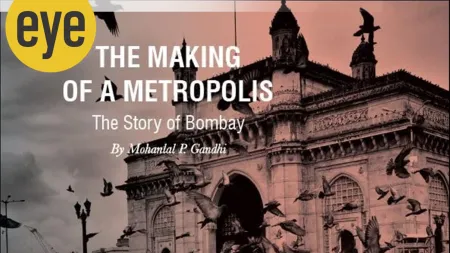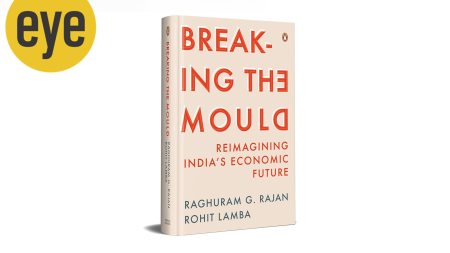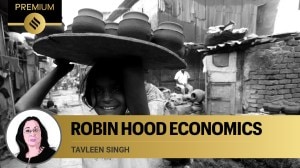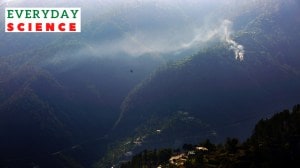- India
- International
Explained: India’s first indigenous Fast Breeder Reactor begins ‘core loading’, why it matters
The beginning of 'core loading' at the Kalpakkam Fast Breeder Reactor marks a critical milestone in the country's three-stage nuclear power programme. How does the FBR work to convert 'fertile material' to fissile material?
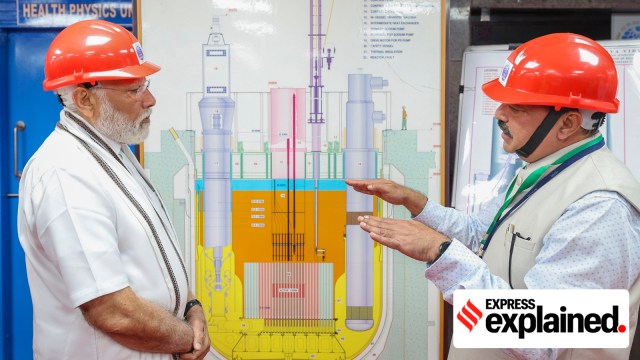 Prime Minister Narendra Modi witnesses initiation of core loading of India's indigenous Prototype Fast Breeder Reactor, at Kalpakkam in Tamil Nadu, Monday, March 4, 2024. (PTI Photo)
Prime Minister Narendra Modi witnesses initiation of core loading of India's indigenous Prototype Fast Breeder Reactor, at Kalpakkam in Tamil Nadu, Monday, March 4, 2024. (PTI Photo) The vital second stage of India’s three-stage nuclear programme got a boost with the commencement of ‘core loading’ at the country’s first indigenous Fast Breeder Reactor (FBR) at Kalpakkam, Tamil Nadu, earlier this month.
Core loading is the process of placing nuclear fuel assemblies inside the core of a nuclear reactor. The initiation of the process was witnessed by Prime Minister Narendra Modi on March 4.
The completion of core loading will effectively mark the first approach to ‘criticality’ — the initiation of a self-sustaining nuclear fission reaction that will eventually lead to the generation of power by the 500 megawatt electric (MWe) FBR.
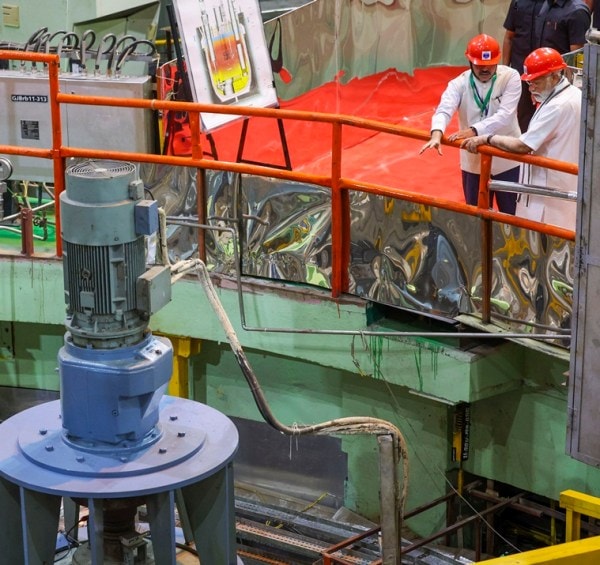 Prime Minister Narendra Modi witnesses initiation of core loading of India’s indigenous Prototype Fast Breeder Reactor, at Kalpakkam in Tamil Nadu, Monday, March 4, 2024. (PTI Photo)
Prime Minister Narendra Modi witnesses initiation of core loading of India’s indigenous Prototype Fast Breeder Reactor, at Kalpakkam in Tamil Nadu, Monday, March 4, 2024. (PTI Photo)
India’s FBR programme
Efforts to build an FBR were initiated two decades ago, and successive governments have nurtured the project as a step towards India developing comprehensive capabilities that span the entire nuclear fuel cycle, by which electricity is produced from uranium in nuclear power reactors.
In 2003, when Atal Bihari Vajpayee was Prime Minister, the Bharatiya Nabhikiya Vidyut Nigam Ltd or BHAVINI was incorporated to build and operate India’s most advanced nuclear reactor, the Prototype Fast Breeder Reactor (PFBR).

The project was expected to be completed by September 2010, but was delayed due to technological challenges. The last set of approvals had revised the completion target to October 2022.
Once commissioned, India will be the second country after Russia to have a commercial operating FBR. China has a small programme on fast breeders; programmes in countries such as Japan, France, and the United States were shut down amid safety concerns.
From ‘fertile’ to ‘fissile’
The Department of Atomic Energy’s (DAE’s) three-stage power programme envisages a pathway to utilising India’s abundant thorium reserves — found in coastal and inland placer sands on the beaches of Kerala, Tamil Nadu, Odisha, Andhra Pradesh, Maharashtra, and Gujarat, and in the inland riverine sands of Jharkhand and West Bengal — to generate electricity.
(A placer deposit is a natural concentration of heavier minerals created by the action of gravity on moving particles. These concentrations are typically found along streams, rivers, beaches, and stretches of residual gravel where they are washed up. Besides thorium (from monazite ore), gold, platinum, titanium, uranium, and rare earth elements are commercially mined from placer deposits.)
India owes the vision of the three-phase programme of nuclear power to ensure energy security to Dr Homi J Bhabha, the father of India’s nuclear programme, and Dr Vikram Sarabhai, who recognised the need for developing FBRs, as these reactors generate more nuclear fuel than they consume due to the gainful conversion of fertile isotopes into fissile material.
The three stages involve the conversion of ‘fertile material’ (which is not fissionable by thermal neutrons but can be converted into fissile material) into fissile material.
For example, U238, the dominant isotope of uranium, is a fertile material that cannot by itself make the reactor achieve criticality, and has to be converted to fissile plutonium (Pu239) in a nuclear reactor. The spent fuel from thermal reactors contains Pu239, which is most efficiently burnt in a fast reactor.
Thorium-bearing monazite too, is a fertile material that has to be converted to fissile material U233.
India has adopted a “closed fuel cycle” approach, which involves the reprocessing of spent fuel to separate the useful Pu239 and U233 isotopes from U238 and Th232. To multiply the fissile inventory and to gradually work towards establishing a higher power base, it is key to ultimately use thorium in the third stage of the programme.
The FBR is an important milestone for getting to the third stage, paving the way for the eventual full utilisation of the country’s thorium.
Three stages and FBR
The first stage — the setting up of Pressurised Heavy Water Reactors (PHWRs) and associated fuel cycle facilities — is in progress. PHWRs are reactors that use natural uranium as fuel and heavy water (deuterium oxide) as coolant and moderator.
The Nuclear Power Corporation of India Limited (NPCIL) operates 22 commercial nuclear power reactors with an installed capacity of 6,780 MWe. The programme has been supplemented by the construction of imported Light Water Reactors (LWRs) — the first of two units built with Russian collaboration is already generating power.
The second stage involves the setting up of FBRs backed by reprocessing plants and plutonium fabrication plants, primarily to multiply the inventory of fissile material. Multiplication of fissile inventory is also needed to establish a higher power base for using thorium in the third stage of the programme.
The third stage will be based on the ThU233 cycle. For producing U233, obtained by irradiation of thorium in PHWRs and FBRs, an Advanced Heavy Water Reactor (AHWR) is proposed.
The combination of power reactors from all the three stages is expected to ensure long-term energy security for the country. But the commercial utilisation of thorium on a significant scale can begin only when abundant supplies of either U233 or Pu239 are available. The progress on the FBR has made the passage to the third phase visible.
Way forward hereafter
As core loading commences, the FBR will initially use Uranium-Plutonium Mixed Oxide (MOX) fuel, officials said. The U238 ‘blanket’ around the fuel core will undergo nuclear transmutation to produce more fuel — thus the name ‘Breeder’. Nuclear transmutation involves the conversion of a chemical element or isotope into another chemical element, with the numbers of protons or neutrons in the nucleus of the atom undergoing a change.
The use of Th232, which is not a fissile material, as a blanket is also envisaged in this stage. Through transmutation, thorium will create fissile U233, which will be used as fuel in the third stage.
The DAE maintains that despite the use of this advanced technology, both the capital cost and per-unit electricity cost are “comparable” to other nuclear and conventional power plants.
While the first of the three stages is already underway with the PHWR programme, the India-US civil nuclear deal has opened the doors for India to buy uranium for its domestic reactors, thus increasing the pace of its nuclear programme.
The DAE aims to increase the share of nuclear power in the energy mix by 2032 by producing 22,400 MWe from its nuclear power plants. It has approved the construction of 10 new PHWRs in ‘fleet mode’, in which a plant is expected to be built in five years from the first pouring of concrete.
More Explained
EXPRESS OPINION
Apr 28: Latest News
- 01
- 02
- 03
- 04
- 05







